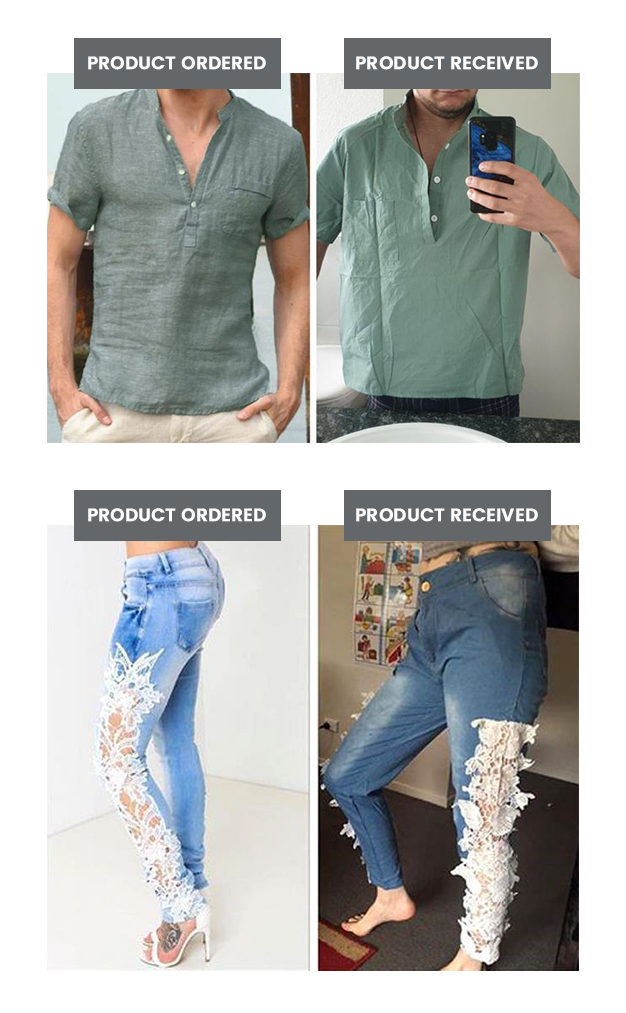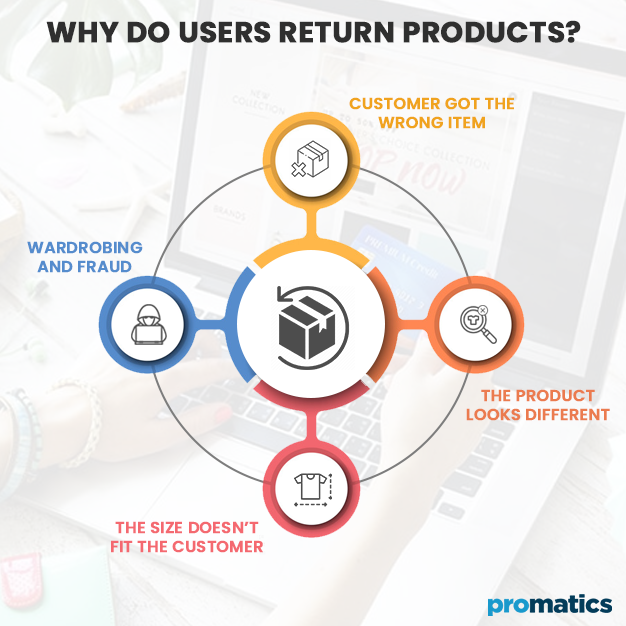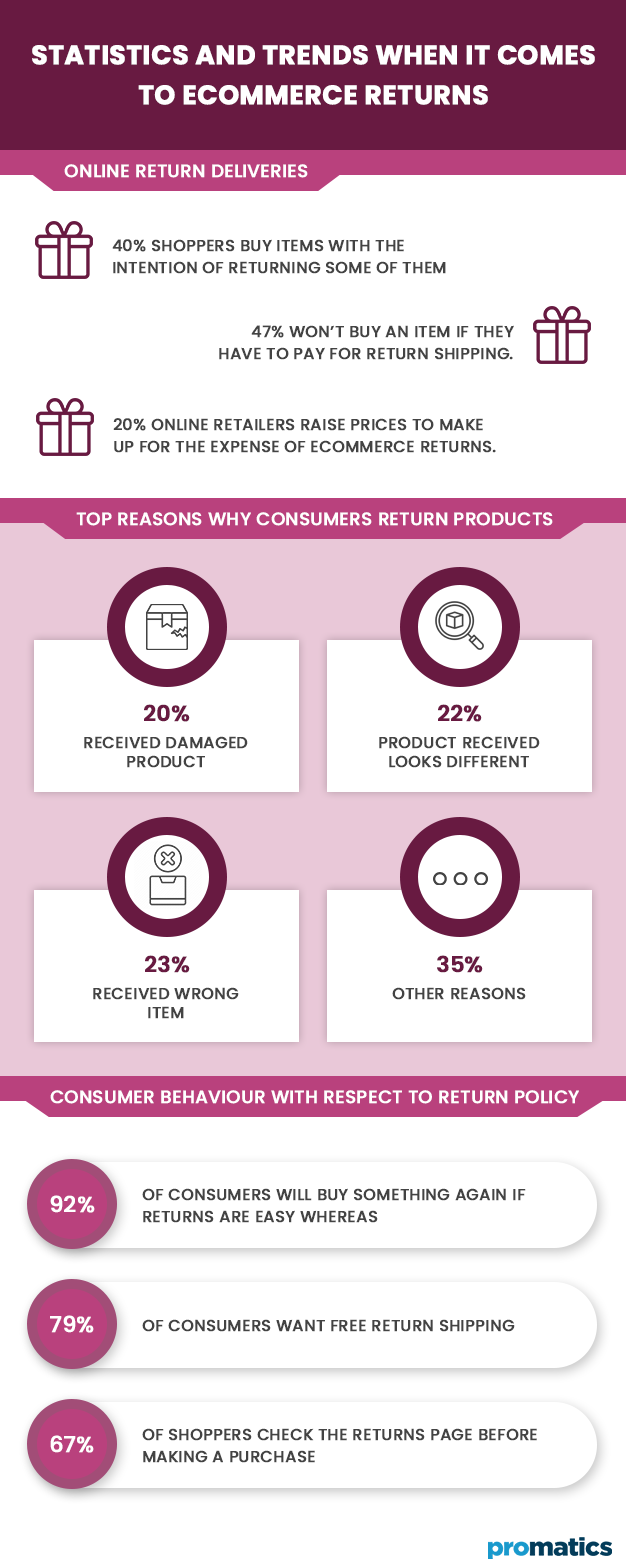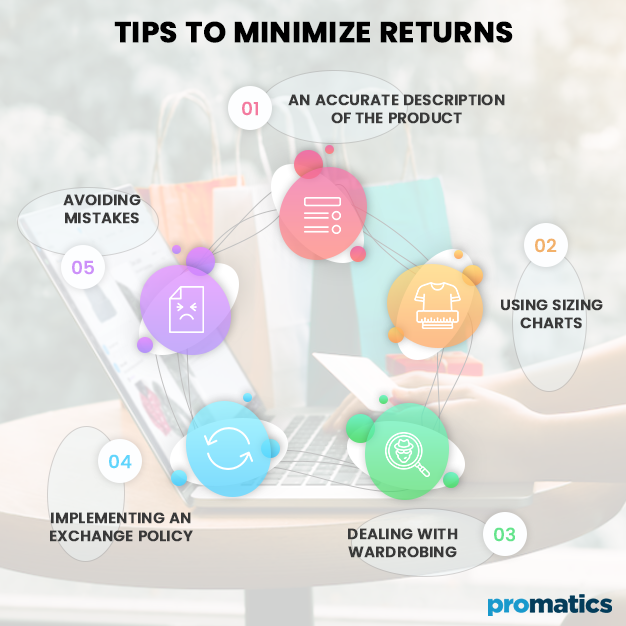Why do Customers Return Products on Ecommerce websites?
COVID-19 has affected all of our lives, but more specifically, it has significantly restructured the way of conducting business all around. The world has seen a shift from brick-and-mortar stores to online shops. Whether you’re new to the eCommerce business industry or a connoisseur, returns will always be a nuisance for you. This article will give you a detailed insight into why your customers might feel the need to return products and how to deal with it if it’s affecting your business successfully.
Why do Customers Return Products?
According to most experts, the best way of dealing with an issue is by eliminating the cause. Hence, before we jump to giving you tips about reducing returns for your eCommerce business, we need to address and understand the root of the problem, i.e., why customers return products. Here are some of the most common reasons:
Customers got the wrong item
Customers getting wrong items does not happen a lot in brick-and-mortar stores, but this occurs quite frequently to those shopping online. Even business tycoons like Amazon and Office Depot face this issue several times a month. According to a survey, almost 23 percent of all items returned are because the store shipped the wrong item. A small error by one of your staff members during the packing or shipping process, and you’ll have a disgruntled customer demanding a return for a mysterious item.
You ought to consider yourself very lucky if the customer contacts you and asks for a return. It is, in fact, illegal to charge a customer for an item that they didn’t buy, which is why they have every right to keep the thing even if you give them a refund.
The product looks different
Statistics have shown that this factor accounts for almost 22 percent of the total number of products returned. Various eCommerce retailers ruin their online businesses because of using the “bait and switch” tactic. They put up flashy pictures stolen from the internet that look entirely different from the actual product. Sometimes, the description provided on the website or in the catalog is not sufficient.
You must’ve come across a “what I ordered versus what I got” comparison on Facebook. When a customer buys your product, they start building up expectations. For instance, after ordering a purse, the lady who called will begin to fantasize about how stunning they’ll look with that purse.
It is natural for a customer to dream how comfortable their future morning walks will be after buying a pair of sneakers. The pictures and description of the product provided by the retailer go a long way in setting up these expectations. When there is a gap between these expectations and reality, the customer will ask for a return. And this will keep happening as long as that gap isn’t bridged.
The size doesn’t fit the customer
Product size is another factor contributing to the return of online products, especially in the clothing, fashion, and footwear industry. Unfit shoes are of no use to the buyer, while clothes of the wrong size are nothing but a waste of money. What else is a customer going to do with a pair of dress shoes that are too big for them or a skirt that’s too small other than asking for a return?
According to a recent survey, 19 percent of the customers have started deliberately ordering multiple variations of a product. They try on the whole lot, keep the size that fits them best, and return the rest of the items.
Wardrobing and fraud
Not all of the customers who return their products are innocent. Sometimes, the customers buy an item only to return after using it for a short period, called wardrobing. If you haven’t come up against this fraudulent practice yet, here’s a firsthand experience of an online retailer. A lady asked for a return of a bright red dress that she had bought a couple of days ago and complained that it didn’t fit her. When the retailer got the product back, he noticed something strange. She had scissored the hem of the inner lining to loosen it a bit.
Many people think it’s okay and fair to buy a jacket or a pair of shoes for an occasion and request a return after it. You might come across someone who bought a tie with a suit for a job interview and doesn’t need them anymore. Or a tennis fan who purchased a TV to see Djokovic win the Wimbledon final of 2021 and now wants a return.
Even though the shoppers might feel as if this is a legitimate practice, it’s unethical and immoral to exploit the company’s return and refund policy.
Why is Minimizing Returns So Important?
The entire return process can negatively influence the retailer’s business, so minimizing the rate of return is necessary and important. You can increase your sales by deploying smart strategies at checkout however if returns are high they are of no value.
In terms of cost, it can take a significant chunk out of the budget. The retailer has to spend substantial money on labor, shipping, warehousing, and restocking. Additionally, if the product is broken or damaged, the company will have to spend money mending it. If the damage is beyond repair, the retailer has to throw away the product, and all the money spent on that particular article will go down the drain.
Moreover, there’s always the potential threat of you losing a customer, especially if a member of your customer services department does not handle the situation well. On top of all the money wasted, the last thing you need is losing a loyal customer to your competitor for good.
According to a report, a staggering 57 percent of the retailers found that product returns interfere with their day-to-day operations and are a hassle. Twenty percent even had to raise the prices of their products to deal with the financial setbacks.
Helpful Initiatives to Minimize Returns
Now that you’re aware of why minimizing returns is so critical and necessary, you might be wondering how to do it. Well, there’s nothing to worry about, as we’ve got you covered here. Here are some tried and tested initiatives that can make an immense impact on minimizing returns:
An accurate description of the product
Writing an accurate description of the product may take up some of your precious time, but take our word for it; it’ll save you from losing more time, money, and customers in the future.
The extra advantage that brick-and-mortar stores provide is that the products can be touched and tried physically. But, if clear, high-resolution images taken from various angles with a zoom-in option along with a detailed, meticulous description are available, it can have a great impact. Some companies also upload a video of their product along with 3-D images.
If you haven’t taken the pictures or written the description yourself, take some time to review and proofread them before uploading them. Doing this helps bridge the gap between the customer’s expectations and reality, which plays a vital part in reducing product returns.
Using sizing charts
This tip is for those online retailers who suffer from frequent returns due to size issues. Using detailed, self-explanatory sizing charts can work wonders. Sometimes, the sizes can vary from company to company, and the best way to deal with that is by providing a brand-specific sizing chart. If you haven’t just started your eCommerce business, you’ll have some customer reviews regarding your sizing information. Take that into account as well to make the shopping for your to-be customers easier.
Following these steps can help increase the sale of your products, create a buzz for your website, and significantly decrease the return rate. If your website is US-based, make sure you’ve included sizing charts for people living in other countries, such as the UK and Canada. Many customers who buy rings online seldom get the right size the first time. Providing a size measuring guide on your website can be a game-changer.
Dealing with wardrobing
You can’t let defrauders cripple your business and waste your time, money, and efforts. But you also can’t make strict return policies as that will affect your sales too.
Certain maneuvers can help you deal with wardrobing by reducing the frequency of returned products. For instance, if you place the tags on the outer side of clothes or shoes, where they are visible, the fraudsters won’t be able to wear or use your products for their parties, interviews, or special occasions.
You can also create a separate policy for habitual offenders by keeping track of all the previously returned products and the mentioned reasons and cross-checking every future request. More often than not, it is not that hard to discern whether a customer has used a product or not. Ask the customer for pictures of the product and if you notice any wrinkles, stains, or broken seals, reject the return request.
Implementing an exchange policy
Another way of dealing with the alarmingly growing return rates is by implementing an exchange policy instead of providing a refund. This way, you will be able to motivate your customers to shop from you again, capture the revenue, and compensate for any losses by providing an exchange. Moreover, this will also help with wardrobing, as you won’t be accommodating the cheats with a refund.
A survey was conducted in 2018 by Narvar in which they concluded that 57 percent of the customers don’t mind an exchange, although 16 percent of them might switch to a different retailer. But, as long as you have an efficient and hassle-free exchange process with a friendly customer service department, you’ll keep your shoppers happy and loyal to you.
Avoiding mistakes
Although it seems like an impossible task, avoiding sending the wrong item can make all the difference for your eCommerce business. Strive to get every order right without making any mistakes.
In the nutshell…
A customer can be inclined to return a recently-purchased product due to several reasons. Most of the time, the requests are justifiable, and the customer deserves a return, but sometimes, the shopper has a malicious intent, as seen in the case of wardrobing.
Regardless of the reasons, an increased return rate is bad for business, whether you’re the retailer of a small-scale setup or a business magnate. It can put a significant dent in the profit margin and make your clients look towards other retailers.
The best way to minimize the rate of product return is by following the research-based tips and initiatives provided here or ensure you are consulting a seasoned eCommerce development agency. They are beneficial for both the company and its customers and save both parties from hassle.
Still have your concerns?
Your concerns are legit, and we know how to deal with them. Hook us up for a discussion, no strings attached, and we will show how we can add value to your operations!




